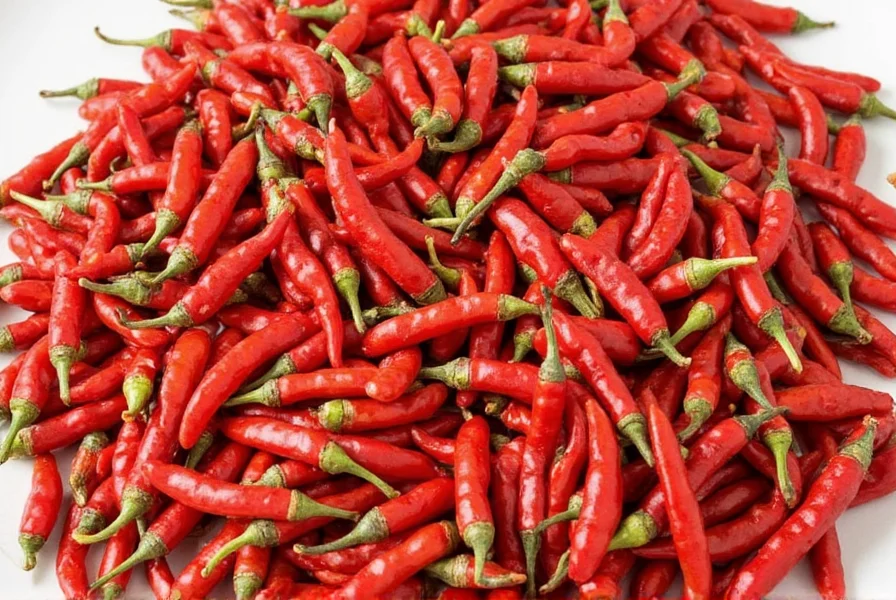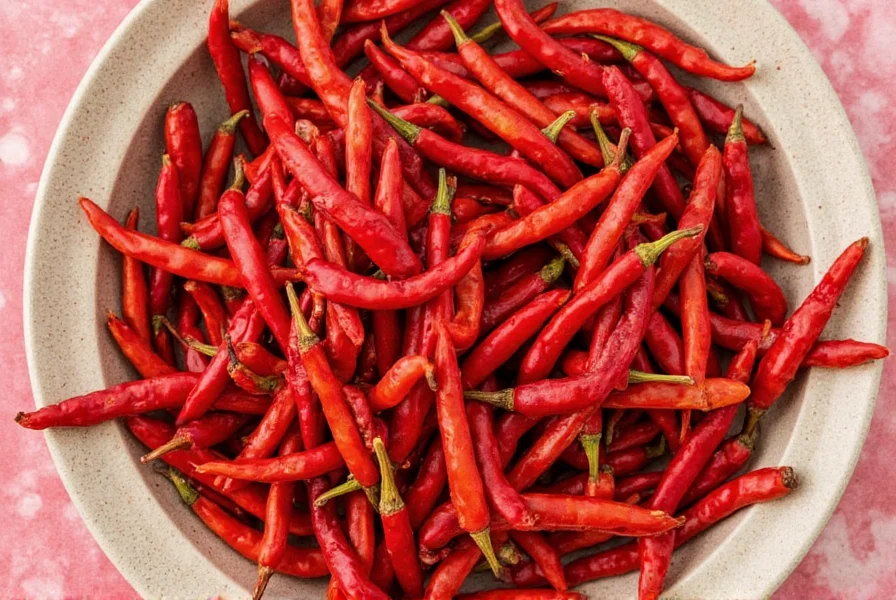Dry red chilli is a dried form of red chili peppers, used to add heat and depth of flavor to dishes. Unlike fresh chilies, dried varieties have concentrated flavors and longer shelf life, making them a staple in cuisines worldwide. In this comprehensive guide, you'll learn everything about dry red chilli: types, heat levels, cooking techniques, buying tips, storage methods, and expert FAQs.
Table of Contents
- What Is Dry Red Chilli?
- Types of Dry Red Chilli and Heat Levels
- 7 Expert Cooking Techniques for Dry Red Chilli
- How to Choose the Best Dry Red Chillies
- Proper Storage & Shelf Life
- Frequently Asked Questions
What Is Dry Red Chilli?
Dry red chilli refers to red chili peppers that have been dehydrated to preserve them and intensify their flavor profile. The drying process concentrates capsaicin (the compound responsible for heat) and develops complex smoky, earthy, or fruity notes depending on the variety. Unlike fresh chilies, dried varieties offer consistent heat levels, longer shelf life, and versatility for grinding into powders, infusing oils, or rehydrating for sauces.
Types of Dry Red Chilli and Heat Levels
Different dried red chili varieties provide distinct flavor profiles and heat intensities. Here's a detailed comparison using the Scoville Heat Unit (SHU) scale:
| Variety | Heat Level (SHU) | Flavor Profile | Best For |
|---|---|---|---|
| Ancho | 1,000–2,000 | Sweet, smoky, raisin-like | Mole sauces, stews, braised meats |
| Guajillo | 2,500–5,000 | Berry-like, tea notes, citrusy | Salsas, marinades, tamales |
| Arbol | 15,000–30,000 | Grassy, sharp, nutty | Soups, rice dishes, oil infusions |
| Cayenne | 30,000–50,000 | Earthy, pungent | Spice blends, chili powder, hot sauces |
| Hatch Chilli (Dried) | Varies (mild to very hot) | Savory, slightly sweet | New Mexican dishes, grilled foods |
7 Expert Cooking Techniques for Dry Red Chilli
Unlock the full potential of dry red chilli with these professional techniques:
- Toast for Maximum Flavor: Lightly toast whole chilies in a dry skillet over medium heat for 30-60 seconds per side until fragrant. This releases essential oils and enhances smoky notes without burning.
- Control Heat by Removing Seeds: Capsaicin concentrates in seeds and inner membranes. Remove these parts for milder heat while preserving flavor complexity.
- Rehydrate for Sauce Making: Soak dried chilies in hot water or broth for 15-20 minutes to soften them. Reserve the soaking liquid for added depth in sauces and stews.
- Create Custom Spice Blends: Grind dried chilies with complementary spices like cumin, garlic powder, or smoked paprika for personalized chili powders or rubs.
- Infuse Oils or Vinegars: Place whole chilies in olive oil or vinegar for 1-2 weeks to create flavorful bases for dressings, marinades, or finishing drizzles.
- Use Whole vs. Crushed Strategically: Add whole chilies to soups for gradual heat release, or crush them for immediate, intense flavor in stir-fries and salsas.
- Explore Global Applications: Try Chinese chili oil, Italian nduja, or North African harissa using region-specific techniques and ingredient pairings.

How to Choose the Best Dry Red Chillies
Select high-quality dried chilies with these expert tips:
- Check Physical Quality: Look for firm, pliable peppers with vibrant color. Avoid brittle, cracked, or moldy specimens.
- Verify Variety Labels: Ensure packaging clearly states the variety (e.g., Ancho, Guajillo) and Scoville rating for accurate recipe matching.
- Prefer Whole Peppers: Whole dried chilies retain flavor longer than pre-ground versions and allow precise heat control by adjusting seed content.
- Shop at Specialty Markets: Latin American, Asian, or Middle Eastern grocery stores typically offer higher-quality, more diverse selections than standard supermarkets.
| Product Name | Key Features | Advantages | Best Applications | Target Users |
|---|---|---|---|---|
| MexGrocer Premium Ancho Pack | Organic, whole, sustainably sourced | Rich, complex flavor; no additives | Mole sauces, braised meats, enchilada sauce | Home cooks, professional chefs |
| Harvest Bay Dried Cayenne Peppers | Extra hot, non-GMO certified | Perfect for spice blends and oil infusions | Hot sauces, pickling, rubs | Heat enthusiasts, DIY spice makers |
| Thai Kitchen Red Bird's Eye Chilies | Authentic Thai variety, intense heat | True regional flavor for curries and salads | Pad Thai, tom yum, som tam dressing | Asian cuisine enthusiasts |
Proper Storage & Shelf Life
Preserve flavor and potency with these storage best practices:
- Airtight Containers: Store in glass jars or vacuum-sealed bags to prevent moisture exposure.
- Cool, Dark Location: Keep in a pantry away from sunlight and heat sources to maintain color and potency.
- Freeze for Longevity: Freeze whole chilies for up to 18 months without flavor degradation.
- Regular Inspection: Discard if mold appears, color fades significantly, or they develop musty odors.
Frequently Asked Questions
Can I Substitute Fresh Chilies for Dry?
Yes, but adjust quantities and expectations. Dried chilies have more concentrated flavor and earthy notes, while fresh chilies offer brighter, grassier heat. Generally use 1 dried chili = 2-3 fresh chilies by volume.
Are All Dry Red Chillies Spicy?
No. Varieties like Ancho (1,000-2,000 SHU) are mild and sweet, while Cayenne (30,000-50,000 SHU) is very hot. Always check Scoville ratings before purchasing.
What Is the Difference Between Chile and Chili?
"Chile" (pronounced "cheh-lay") refers to the pepper plant or fresh/dried pods. "Chili" (pronounced "chill-ee") typically describes prepared dishes like chili con carne or chili powder products.
How Do I Make My Own Chili Oil?
Heat 1 cup neutral oil (like grapeseed) to 250°F. Add 1/4 cup crushed dried chilies, 2 garlic cloves, and optional Szechuan peppercorns. Simmer for 10 minutes, then cool completely. Strain and store in airtight container for up to 6 months.
What Are the Heat Level Differences Between Common Dry Red Chillies?
Ancho (1,000-2,000 SHU): Mild, sweet. Guajillo (2,500-5,000 SHU): Medium, berry-like. Arbol (15,000-30,000 SHU): Hot, nutty. Cayenne (30,000-50,000 SHU): Very hot, pungent. Always match heat levels to your recipe needs.
How Can I Control Heat When Cooking with Dry Red Chilli?
1) Remove seeds and membranes for less heat, 2) Soak in milk or sugar water to neutralize capsaicin, 3) Start with smaller quantities and taste gradually, 4) Balance with dairy, acid, or sweetness, 5) Choose milder varieties like Ancho for flavor without intense heat.
Why Toast Dry Red Chilli Before Use?
Toasting releases essential oils and develops deeper, smoky flavors. Heat whole chilies in a dry skillet for 30-60 seconds per side until fragrant but not burned. This step is crucial for mole sauces, stews, and complex dishes.
How Do I Know If Dry Red Chillies Have Gone Bad?
Signs of spoilage include: visible mold (white/green/black spots), musty or sour odor, significant color fading, excessive brittleness, or bitter taste. Properly stored, they last 6-12 months.
What Are the Health Benefits of Dry Red Chilli?
Dry red chilli contains capsaicin, which may support metabolism, reduce inflammation, and provide pain relief. They're rich in vitamins A and C and antioxidants. However, consult a healthcare provider for medical advice, as excessive consumption can irritate digestion.
Can I Grow and Dry My Own Chillies?
Yes! Harvest fully ripe red chilies, wash thoroughly, and dry using one of these methods: 1) String them into ristras and hang in a warm, dry place for 2-3 weeks, 2) Use a food dehydrator at 135°F for 12-24 hours, or 3) Oven dry at lowest setting with door ajar for 4-6 hours. Store in airtight containers away from light.
Conclusion: Master Dry Red Chilli for Restaurant-Quality Dishes

Dry red chilli transforms ordinary meals into extraordinary culinary experiences. By understanding varieties, heat levels, and proper techniques, you can confidently elevate any dish—from smoky mole sauces to fiery Thai curries. Remember: quality ingredients, proper storage, and mindful heat control are the keys to mastering this versatile spice. Now go explore the world of flavor!










 浙公网安备
33010002000092号
浙公网安备
33010002000092号 浙B2-20120091-4
浙B2-20120091-4